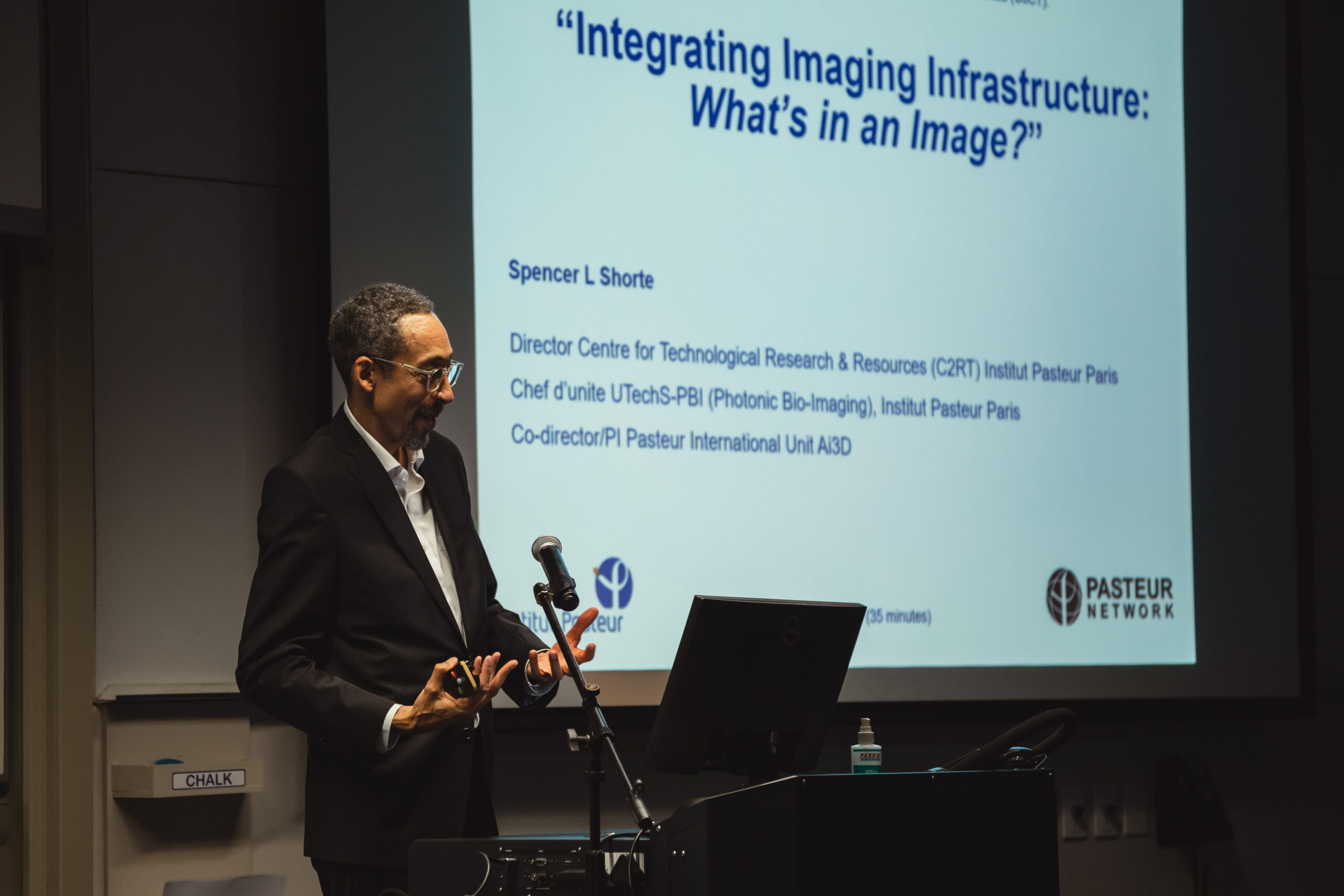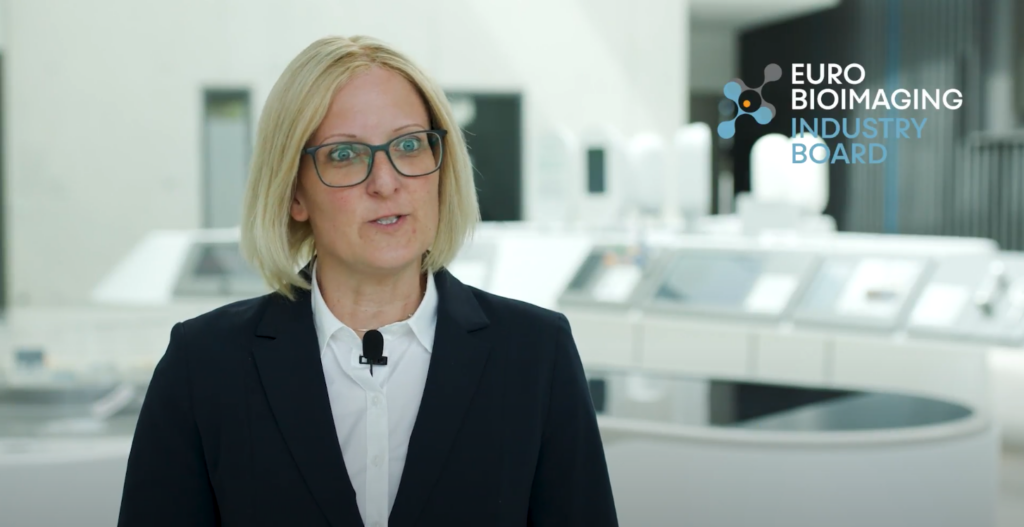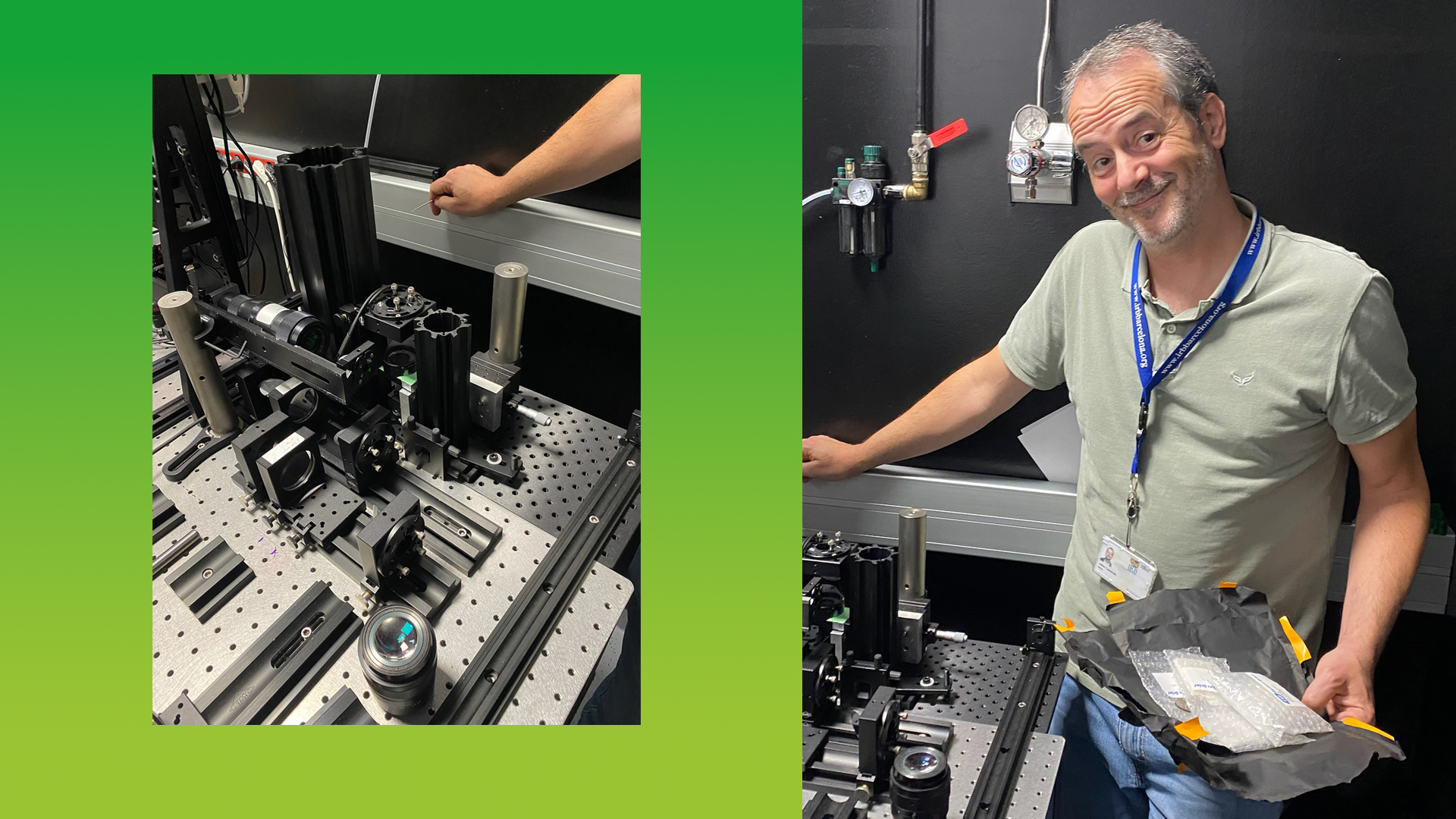
EBIB Anniversary: Companies also are starting to recognize the success we have had
Interview with Dr. Claudia Pfander, Industry Board Coordinator
The Euro-BioImaging Industry Board is an independent self-governed body, that nonetheless closely interacts with Euro-BioImaging. The Industry Board Coordinator acts as the facilitator at the interface of Board members, the Euro-BioImaging governance and the Node community. Claudia Pfander has been in this role since 2020, and supports the many activities of the EBIB.

In this interview, Claudia talks about her role and how to build an environment of mutual trust that enables free exchange and collaboration (you can watch a brief teaser here).
What is your role as the Industry Board Coordinator?
My role is to coordinate and organize the activities of the Industry Board, from quarterly meetings of the Board to workshops with the imaging community; to conduct surveys with the Euro-BioImaging Nodes or to identify opportunities where an exchange between our industry partners and Euro-BioImaging would be valuable, whether it is on strategic questions or very concretely for an activity one of our facilities might be planning.
How do you bring the EBIB and imaging community together?
Most of my work is about connecting the dots – bringing people with similar interests or questions together to exchange at meetings or to work collaboratively on a project or problem. But you also have to create these opportunities, to give organisations and the people in it visibility and help them get to know each other in a trusted environment.
What do you value most about the interaction with the companies in the field?
Companies in the imaging sector are generally very approachable and very interested to learn about the views of users and facilities. Imaging is a very rapidly evolving field, and there's a shared interest and excitement about new technologies. So there's really a large need for getting to know each other and exchanging about the needs of the community.
What do you see as the main challenge in bridging between imaging industry and the imaging community?
You have to be a good listener, both towards the companies and the facilities, to better understand where their interests lie, what their needs are, and also the motivation why they want to engage.
Some topics benefit from an open discussion in a larger forum to get different perspectives, or to also align behind a common goal, such as communication with policymakers. There are other topics, such as R&D collaborations, where it's very important to match the right partners. So it involves a lot of bilateral discussions at the beginning.
Have you perceived a change in the way Euro-BioImaging Node staff see industry partners?
I am very happy that we have some consistency among our Board members, with some of them involved during the whole last 10 years. This means that at the annual all-hands meetings or in online workshops, people see familiar faces and this builds trust. The introduction of several meeting formats where industry presents alongside our Nodes has also helped, as well as industry partners contributing actively to expert groups. I think many facilities value this interaction. It is also becoming more important for facilities to demonstrate industry collaborations to their funders, and with the Industry Board they have a single contact point to reach out to them.
The number of members on the EBIB has greatly expanded since 2020. How do you bring new companies on board?
I also try to identify their needs, whether it is visibility in a new market or voice-of-customer interviews or having a neutral platform to engage with other companies in their area. If interests are aligned, new companies can be invited to attend one Board meeting as an observer or to present their technology once in our Tech Exchange webinar before joining.
I talk to a lot of company representatives throughout the year and highlight the relevance of Euro-BioImaging. We are the largest network of imaging facilities in Europe and can offer many opportunities to companies in terms of engagement with facilities as their key customers or European initiatives and projects in the imaging field.
Especially in microscopy, there is a huge diversity in applications and technology and a lot of need for custom specifications, so companies immediately see the value in meeting our facilities. In medical imaging, the emphasis is more on the networks we are involved in, e.g. working on preclinical imaging standards or data access.
Have you perceived a shift in how companies see Euro-BioImaging?
Companies are definitely more aware of Euro-BioImaging, whom we present and how we operate. The Euro-BioImaging Communications team has done a fantastic job over the last years to create this visibility. I see more companies now that reach out to me directly and ask how they can become part of the network. Companies also are starting to recognize the success we have had – increasing our user numbers, getting funding for imaging projects, widening participation of European countries and Nodes. So for those companies that have been on board with a long-term strategic perspective, they now see that this investment has paid off and things are happening.
I was not there from the beginning, but in the early days this certainly was uniting behind a common goal and supporting the set up of Euro-BioImaging, for example through the joint decision paper. The Industry Board includes many leading European companies, and their visible support has certainly had a large impact in convincing the Member States.
In the more recent past, the most important achievement is certainly the way Industry Board members have started to engage in various activities, for example our Industry Intership pilot, or a workshop in Smart Microscopy in 2022, which led to the formation of an industry-academia working group that is still very active. The larger companies are also now talking about Euro-BioImaging within their own organisation, and that helps us find the right industry representative for a given activity, whether its on training or technical topics, which makes any interaction all the more productive and impactful
Is there an achievement that you are particularly proud of?
What I noticed over the past years, and this certainly is not my own achievement, but that of the whole team, is that the recognition of Euro-BioImaging as the leading research infrastructure in Imaging and the visibility has really grown. When I started in my role in 2020, I still had to explain the concept of Euro-BioImaging to many companies and the benefits of joining the community were not so clear to them. But last year at ELMI I noticed for the first time a significant shift in perception – suddenly companies approached us and wanted to work with us, also coming up with clear proposals on where they saw possibilities for interaction.
And we want to build on that, creating more of these opportunities, connecting people in academia and industry with a common purpose, to drive imaging forward.
More news from Euro-BioImaging


